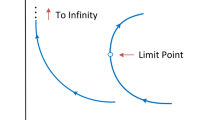Abstract
The preliminary mission design of spacecraft missions to asteroids often involves, in the early phases, the selection of candidate target asteroids. The final result of such an analysis is a list of asteroids, ranked with respect to the necessary propellant to be used, that the spacecraft could potentially reach. In this paper we investigate the sensitivity of the produced asteroids rank to the employed trajectory model in the specific case of a small low-thrust propelled spacecraft beginning its journey from the Sun-Earth L2 Lagrangian point and heading to a rendezvous with some near-Earth asteroid. We consider five increasingly complex trajectory models: impulsive, Lambert, nuclear electric propulsion, nuclear electric propulsion including the Earth's gravity, solar electric propulsion including the Earth's gravity and we study the final correlation between the obtained target rankings. We find that the use of a low-thrust trajectory model is of great importance for target selection, since the use of chemical propulsion surrogates leads to favouring less attractive options 19% of times, a percentage that drops to 8% already using a simple nuclear electric propulsion model that neglects the Earth's gravity effects and thrust dependence on the solar distance. We also find that for the study case considered, a small interplanetary CubeSat named M-ARGO, the inclusion of the Earth's gravity in the considered dynamics does not affect the target selection significantly.
Similar content being viewed by others
Change history
11 February 2022
A Correction to this paper has been published: https://doi.org/10.1007/s42064-022-0136-2
References
Benkhoff, J., van Casteren, J., Hayakawa, H., Fujimoto, M., Laakso, H., Novara, M., Ferri, P., Middleton, H. R., Ziethe, R. BepiColomboComprehensive exploration of mercury: mission overview and science goals. Planetary and Space Science, 2010, 58 (1–2): 2–20.
Kawaguchi, J., Fujiwara, A., Uesugi, T. Hayabusa–Its technology and science accomplishment summary and Hayabusa-2. ActaAstronautica, 2008, 62(10): 639–647.
Russell, C. T., Raymond, C. A. The dawn mission to Vesta and Ceres. Space Science Reviews, 2011, 163 (1–4): 3–23.
Racca, G. D., Marini, A., Stagnaro, L., Van Dooren, J., Di Napoli, L., Foing, B. H., Lumb, R., Volp, J., Brinkmann, J., Grunagel, R., Estublier, L. Tremolizzo, E., McKay, M. Camino, O., Schoemaekers, J., Hechler, M., Khan, M., et al. SMART-1mission description and development status. Planetary and Space Science, 2002, 50(14–15): 1323–1337.
Barucci, M. A., Yoshikawa, M., Michel, P., Kawagushi, J., Yano, H., Brucato, J. R., Franchi, I. A., Dotto, E., Fulchignoni, M., Ulamec, S., Marco Polo Science Team. MARCOPOLO: near earth object sample return mission. Experimental Astronomy, 2009, 23(3): 785–808.
Harris, A. W., Benz, W., Fitzsimmons, A., Green, S. F., Michel, P., Valsecchi, G. B. Target selection for the Don quijote mission. Report to ESAof the Near-Earth Asteroid Mission Advisory Panel, 2005.
Edelbaum, T. N. Propulsion requirements for controllable satellites. ARS Journal, 1961, 31(8): 1079–1089.
Yam, C. H., Izzo, D., Biscani, F. Towards a high fidelity direct transcription method for optimisation of low- thrust trajectories. The 4th International Conference on Astrodynamics Tools and Techniques, 2010.
Sims, J., Finlayson, P., Rinderle, E., Vavrina M., Theresa, D., Kowalkowski, T. Implementation of a low-thrust trajectory optimizationalgorithm for preliminary design. AIAA/AAS Astrodynamics Specialist Conference and Exhibit, 2006.
McConaghy, T. T., Debban, T., Petropoulos, A., Longuski, J. Design and optimization of low-thrust trajectories with gravity assists. Journal of Spacecraft and Rockets, 2003, 40(3): 380–387.
MPCORB Database: https://doi.org/www.minorplanetcenter.net/iau/MPCORB.html.
Izzo, D. Revisiting Lambert's problem. Celestial Mechanics and Dynamical Astronomy, 2015, 121(1): 1–15.
Biscani, F., Izzo, D., Mrtens, M. esa/pagmo2: pagmo 2.7. Zenodo, 2018, https://doi.org/10.5281/zenodo.1217831.
Gill, P., Murray, W., Saunders, M. SNOPT: An SQP algorithm for large-scale constrained optimization. SIAM review, 2005, 47(1): 99–131.
Pontryagin, L. S. Mathematical theory of optimal processes. Routledge, 2018.
Tsiolkovsky, K. E. Exploration of the universe with reaction machines. The Science Review, 1903.
Izzo, D., Hennes, D., Simoes, L. F., Martens, M. Designing complex interplanetary trajectories for the global trajectory optimizationcompetitions. Space Engineering, 2016, 151–176.
Acknowledgements
We would like to acknowledge and thank Dr. Roger Walker for leading the team during the Concurrent Design Facility (CDF) M-ARGO study, our colleagues in ESA/ESOC who motivated us to perform this work and all the CDF study members without whose contribution the M-ARGO study case here used would not have existed.
Author information
Authors and Affiliations
Corresponding author
Additional information
Alessio Mereta received his master's degree in Computer Engineering from the University of Genoa, in 2015. He later did an internship at the Italian Institute of Technology, working on machine learning for automatic speech recognition. In 2016, he joined the Advanced Concepts Team of the European Space Agency as a young graduate trainee, doing research on artificial intelligence for space.His research interests are machine learning and evolutionary computation.
Dario Izzo is the head of the European Space Agency's Advanced Concepts Team (ESA). He graduated as a doctor majoring inaeronautical engineering from the SapienzaUniversity of Rome, in 1999. He later took a second master degree in satellite platforms at the University of Cranfield, UK, and received his Ph.D. degree in mathematical modeling, in 2003,from the SapienzaUniversity of Rome, where he also taught classical mechanics and space fight mechanics in 20022003.In 2013, he received the Humies Gold Medal for his work on grand tours of the Galilean moons, and in 2014, he won the 8th edition of the Global Trajectory Optimization Competition (GTOC), organized by NASA/JPL, leading a mixed team of ESA/JAXA scientists. During his career at ESA, he established several innovative initiatives, among which is worth reminding GTOC (to foster global approaches to interplanetary trajectory optimization), the Summer of Code in Space(SOCIS) (to foster open source software tools in space), and the Kelvins online platform (to support data driven online competitions).
Rights and permissions
About this article
Cite this article
Mereta, A., Izzo, D. Target selection for a small low-thrust mission to near-Earth asteroids. Astrodyn 2, 249–263 (2018). https://doi.org/10.1007/s42064-018-0024-y
Received:
Accepted:
Published:
Issue Date:
DOI: https://doi.org/10.1007/s42064-018-0024-y




